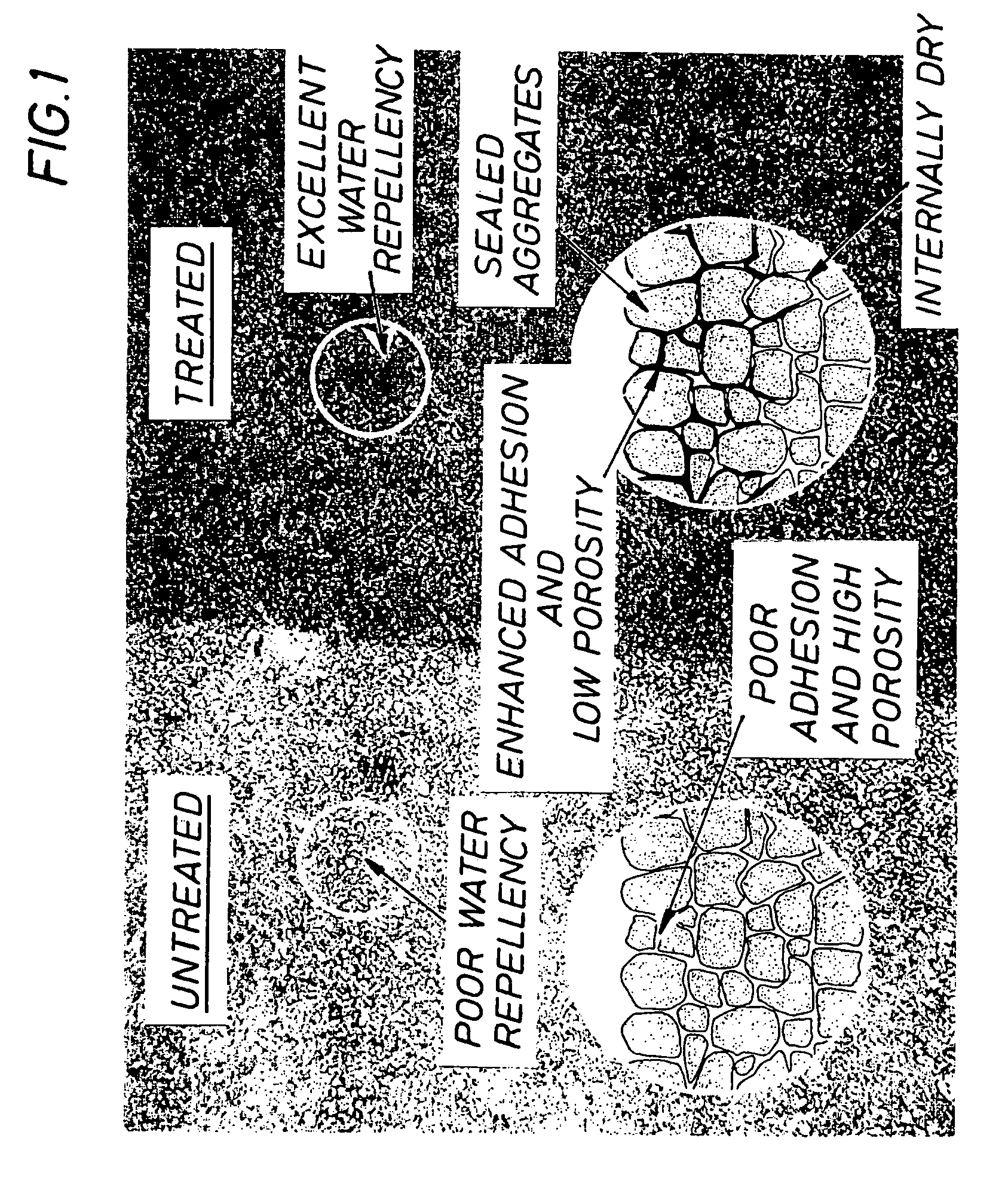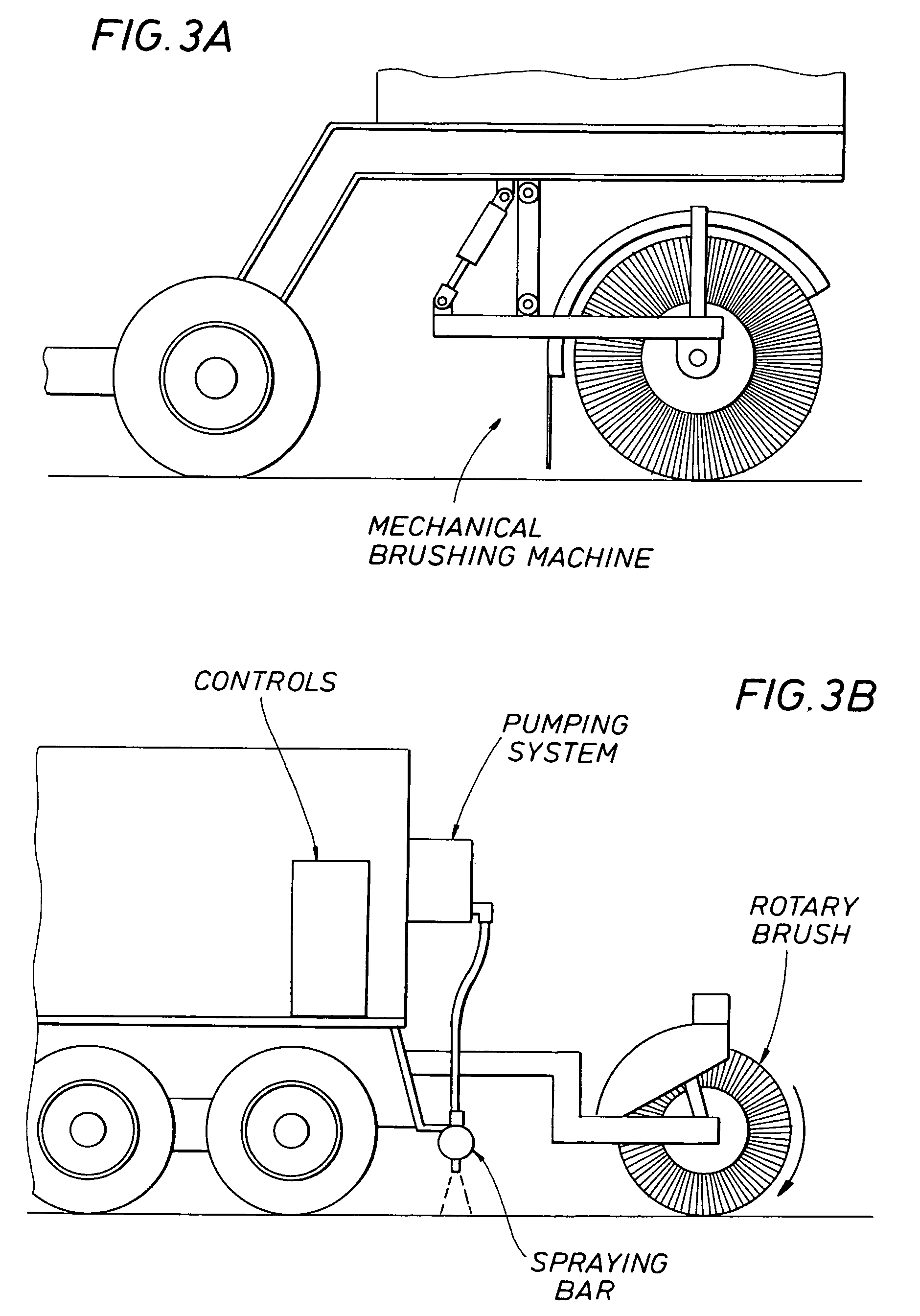Low-viscosity, silicone-modified penetrating asphalt sealer to eliminate water associated problems in asphalt pavements
a technology of penetrating asphalt and low viscosity, which is applied in the direction of roads, highways, building components, etc., can solve the problems of increasing porosity, cracks, gaps between particles within the pavement matrix, etc., and achieves maintenance free, eliminates water penetration, and eliminates the transmission of water through the asphalt pavement
- Summary
- Abstract
- Description
- Claims
- Application Information
AI Technical Summary
Benefits of technology
Problems solved by technology
Method used
Image
Examples
Embodiment Construction
[0032]It has been discovered that an oxidized asphalt cutback provides an excellent filler for an asphalt pavement sealer and treatment material. Preferably the oxidized asphalt cutback is combined with a fine graphite powder to form an emulsion that can lead to a significant reduction in the porosity of asphalt pavement by partially filling the voids and pores of the pavement. When coupled with a formed siloxane resin, the mixture results in strengthening of the adhesion between the existing asphalt material and aggregate as well as between any oxidized bitumen particles, functioning as a substitute for lost aromatic compounds of the pavement. The mixture tends to eliminate further oxidation of the asphalt material. As a result of partially sealing voids and capillaries, some moisture transmission is eliminated. Embodiments of the invention can act as a further moisture barrier by coating the surface of exposed aggregate, preventing moisture from being absorbed therein, especially ...
PUM
| Property | Measurement | Unit |
|---|---|---|
| viscosity | aaaaa | aaaaa |
| speed | aaaaa | aaaaa |
| weight | aaaaa | aaaaa |
Abstract
Description
Claims
Application Information
 Login to View More
Login to View More - R&D
- Intellectual Property
- Life Sciences
- Materials
- Tech Scout
- Unparalleled Data Quality
- Higher Quality Content
- 60% Fewer Hallucinations
Browse by: Latest US Patents, China's latest patents, Technical Efficacy Thesaurus, Application Domain, Technology Topic, Popular Technical Reports.
© 2025 PatSnap. All rights reserved.Legal|Privacy policy|Modern Slavery Act Transparency Statement|Sitemap|About US| Contact US: help@patsnap.com



